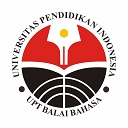Religious Content in Anime “Enen no Shouboutai”
Abstract
Keywords
Full Text:
PDF (IND)References
Agyeiwaah, E., Suntikul, W., & Carmen, L. Y. S. (2019). ‘Cool Japan’: Anime, soft power and Hong Kong generation Y travel to Japan, Journal of China Tourism Research, 15(2), 127-148. https://doi.org/10.1080/19388160.2018.1540373
Andrews, D. K. (2014). Genesis at the shrine: the votive art of an anime pilgrimage. Mechademia, 9, 217-233. http://dx.doi.org/10.1353/mec.2014.0001
Association of Japanese Animation. (2019). Anime Industry Report 2019. diakses dari https://aja.gr.jp/english/japan-anime-data
Bocking, B. (2005). A Popular Dictionary of Shinto (online ed). Diakses dari Taylor & Francis e-Library.
Bukh, A. (2014). Revisiting Japan’s Cultural Diplomacy: A Critique of the Agent-Level Approach to Japan’s Soft Power. Asian Perspective, 38(3), 461-485. http://dx.doi.org/10.1353/apr.2014.0019
Burkhanov, R.A., Ivanova, E.V., & Kolpakova, A.D. (2019). Religious mythology: the problem of aberration of infernal characters in Japanese “Anime”. J. Sib. Fed. Univ. Humanit. soc. sci., 12(5), 752–763. http://dx.doi.org/10.17516/1997-1370-0420
Cho, K. (2017). Religion in the press: the construction of religion in the korean news media. Journal of Korean Religions, 8(2), 61-89. http://dx.doi.org/10.1353/jkr.2017.0013
Miyao, D. (2002). Before anime: animation and the Pure Film Movement in pre-war Japan, Japan Forum, 14(2), 191-209. http://dx.doi.org/10.1080/09555800220136356
Eisenlohr, P. (2012). Media and religious diversity. Annual Review of Anthropology, 41(2012), 37-55. Diakses dari https://www.annualreviews.org/doi/abs/10.1146/annurev-anthro-092611 145823?journalCode=anthro
Fennell, D., Liberato, A. S. Q., Hayden, B., & Fujino, Y. (2012). Consuming anime. Television and New Media, 14, 440-456. https://doi.org/10.1177%2F1527476412436986
Fire Force – Watch on Cruncyroll. (2019). Diakses dari https://www.crunchyroll.com/fire-force
Frohlich, D. O. (2012). Evil must be punished: apocalyptic religion in the television series Death Note, Journal of Media and Religion, 11(3), 141-155. https://doi.org/10.1080/15348423.2012.706158
Kanji, L. (2016). Illustrations and influence: soft diplomacy and nation branding through popular culture. Winter 2016, 37(2), 40-45.
Lovric, B. (2016). Soft power, Journal of Chinese Cinemas, 10(1), 30-34. https://doi.org/10.1080/17508061.2016.1139798
Mínguez-López, X. (2014). Folktales and other references in Toriyama’s Dragon Ball, Animation: An Interdisciplinary Journal 2014, 9(1), 27–46. http://dx.doi.org/10.1177/1746847713519386
Napier, S. J. (2005). Anime from Akira to Howl’s Moving Castle: Experiencing Contemporary Japanese Animation. New York: Palgrave Macmillian.
Napier, S. J. (2007). From Impressionism to Anime: Japan as Fantasy and Fan Cult in the Mind of the West. New York: Palgrave Macmillian.
Richmond, S. (2009). The Rough Guide to Anime. London: Rough Guides, Limited.
Tanabe Jr., & George J. (2007). Playing with religion. Nova Religio: The Journal of Alternative and Emergent Religions, 10(3), 96-101.
Thomas, J. B. (2012). Drawing on Tradition: Manga, Anime, and Religion in Contemporary Japan. Hawai’i: University of Hawai’i Press
Wells, P. (1998). Understanding Animation. New York: Routledge.
DOI: https://doi.org/10.17509/japanedu.v6i1.32942
Refbacks
- There are currently no refbacks.
Copyright (c) 2021 JAPANEDU: Jurnal Pendidikan dan Pengajaran Bahasa Jepang

This work is licensed under a Creative Commons Attribution-ShareAlike 4.0 International License.
 Published by:
Published by: Department of Japanese Language Education, Faculty of Language and Literature Education
Universitas Pendidikan Indonesia
 Online ISSN: Online ISSN:2528-5548 |

JAPANEDU: Jurnal Pendidikan dan Pengajaran Bahasa Jepang (e-ISSN:2528-5548) lisenced under a Creative Commons Attribution-ShareAlike 4.0 Internasional (CC BY-SA 4.0)


